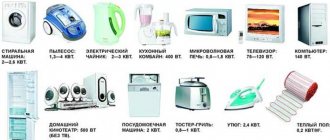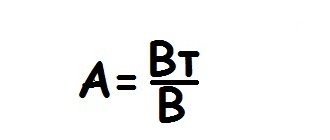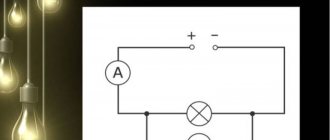Kilowatts and megawatts are considered two popular watt sizing factors. When people talk about solar energy, wind turbines or power plants, they always mention the dimension that is most suitable for these objects - megawatts (MW). When entering a store to purchase household appliances, the buyer first of all gets acquainted with its characteristics, among which he finds the power consumption in kilowatts. Moreover, the higher its value, the more efficiently the device performs its functions.
If you want to know how many household electrical appliances can be connected to 1 MW of electricity generated at a power plant or other generation source, you will need to convert megawatts to kilowatts. How to do this is described below.
Convert MW to kW
Definition
The above letter is a Latin abbreviation for the quantity familiar to everyone from physics lessons - watt. According to the International SI Standards, Watt (W) is a unit of measurement of power.
If we return to the issue with the characteristics of household electrical appliances, then the higher the number of watts in any of them, the more powerful it is.
For example, on the display case there are two blenders with the same price: one of them is from a popular company with 250 W (W), the other is from a lesser-known manufacturer, but with a power of 350 W (W).
These numbers mean that the second one will chop or beat food faster than the first one over the same period of time. Therefore, if the buyer is primarily interested in the speed of the process, it is worth choosing the second option. If speed does not play a key role, you can purchase the first one, as it is more reliable and, possibly, durable.
Who came up with the idea of using watts?
Oddly enough it sounds today, but before the advent of watts, the unit of measurement of power almost throughout the world was horsepower (hp, in English - hb), less often foot-pound-force per second was used.
Watts were named after the man who invented and introduced this unit - Scottish engineer and inventor James Watt. Because of this, this term is abbreviated with a capital letter W (W). The same rule applies to any SI unit named after a scientist.
The name, like the unit of measurement itself, was first officially considered in 1882 in Great Britain. After this, it took the watt a little less than a hundred years to be accepted throughout the world and become one of the International System of Units (SI) units (this happened in 1960).
References
- International Bureau of Weights and Measures (2006), International System of Units (SI)
(PDF) (8th ed.), Pp. 118, 144, ISBN 92-822-2213-6, archived (PDF) from the original on 08/2017/14 - Yildiz, I.; Liu, Y. (2018). "Energy Units, Conversions and Dimensional Analysis". In Dincer, I. (ed.). Integrated energy systems.
Volume 1: Fundamentals of Energy . Elsevier. pp. 12–13. ISBN 9780128149256. - Avallone, Eugene A; et al., eds. (2007), Mark's Standard Handbook for Mechanical Engineers
(11th ed.), New York: McGraw Hill, pp. 9–4, ISBN 978-0-07-142867-5. - ^ a b c
Klein, Herbert Arthur (1988) [1974].
The Science of Measurement: A Historical Review
. New York: Dover. p. 239. ISBN 9780486144979. - "Address of C. William Siemens." Report of the fifty-second meeting of the British Association for the Advancement of Science
. London: John Murray. 1883. pp. 1–33. - Siemens supported his proposal, saying that Watt was the first who "had a clear physical idea of power and gave a rational method of measuring it." "Siemens, 1883, p. 6"
- Siemens, 1883, p. 5 "
- Tunbridge, P. (1992). Lord Kelvin: His Influence on Electrical Measurement and Units of Measurement
. Peter Peregrinus: London. paragraph 51. ISBN 0-86341-237-8. - ^ a b
"Units, physical."
Encyclopedia Britannica
.
27
(11th ed.). 1911. p. 742. - “Regulation 12 of the 11th State Committee for Civil Defense (1960).” Bureau International des Poids et Mesures (BIPM)
. Retrieved April 9, 2022. - Ainslie, M.A. (2015). The Age of Sonar: Planetary Oceanography, Underwater Noise Monitoring, and Underwater Sound Terminology. Acoustics today.
- Morpheus, K. (2001). Dictionary of acoustics.
- “Bye Bye Batteries: Radio Waves as a Low-Power Source,” New York Times
, July 18, 2010, archived from the original 3/21/2017. - Stetzler, Proceedings; Magotra, Neeraj; Gelabert, Pedro; Kasturi, Preeti; Bangalore, Sridevi. "A platform for the development of low-power, real-time programmable digital signal processors for digital hearing aids." Datasheet Archive. Archived from the original March 3, 2011. Retrieved February 8, 2010.
- Nakagami, Hidetoshi; Murakoshi, Chiharu; Iwafune, Yumiko (2008). International comparison of household energy consumption and its indicator
(PDF). ACEEE Summer Study on Energy Efficiency in Buildings. Pacific Grove, CA: American Council for an Energy Efficient Economy. Figure 3. Household energy consumption by fuel type. 8:214–8:224. Archived (PDF) from the original January 9, 2015. Retrieved February 14, 2013. - Elena Papadopoulou, Photovoltaic Industrial Systems: An Environmental Approach
Springer 2011 ISBN 3642163017, p.153 - “Information Digest 2007–2008, Appendix A” (PDF). Nuclear Regulatory Commission. 2007. Archived (PDF) from the original February 16, 2008. Retrieved January 27, 2008.
- Bai, Jim; Chen, Aizhu (November 11, 2010). Lewis, Chris (ed.). “China's Shanxi province will face a power shortage of 5-6 GW by the end of the year - paper.” Beijing: Reuters.
- "Not on my beach please." Economist
. August 19, 2010 Archived from the original on August 24, 2010. - "Chiffres clés" [Key numbers]. Electrabel
. Who we are: Nuclear (in French). 2011. Archived from the original on 2011-07-10. - Davidson, CC; Preedy, R. M.; Cao, J; Zhou, C; Fu, J. (October 2010), “Ultra-High Power Thyristor Valves for HVDC in Developing Countries,” 9th International Conference on AC and DC Power Transmission
, London: IET. - "Crossing the Petawatt Threshold." Livermore, : Lawrence Livermore National Laboratory. Archived from the original September 15, 2012. Retrieved June 19, 2012.
- The world's most powerful laser: 2,000 trillion watts.
What is this? , IFL Science, archived from the original on 08/22/2015. - Eureka Alert
(press release), August 2015, archived from the original on 08/08/2015. - "Construction of a composite time series of total solar irradiance (TSI) from 1978 to the present." : PMODWRC. In the archive from the original dated 08/22/2011. Retrieved 2005-10-05.
- Rowlett, Russ. "How many? Dictionary of units of measurement. M". University of North Carolina at Chapel Hill. In the archive from the original dated 08/22/2011. Retrieved 2017-03-04.
- Cleveland, C. J. (2007). "Watt". Encyclopedia of the Earth
. - “Solar Energy Grows at Record Pace in 2008 (Excerpt from EERE Network News). US: Department of Energy). March 25, 2009 Archived from the original October 18, 2011
- International Bureau of Weights and Measures (2006), International System of Units (SI)
(PDF) (8th ed.), p. 132, ISBN 92-822-2213-6, archived (PDF) from the original at 2017-08 -14 - Avedøre power station ( Avedøre værket
)." DONG Energy. Archived from the original on 2014-03-17. Retrieved 2014-03-17. - "Selecting an inverter." Wind and sun of Northern Arizona. Archived from the original May 1, 2009. Retrieved March 27, 2009.
Formulas for finding power
From physics lessons, many remember various problems in which it was necessary to calculate the current power. Both then and today the formula is used to find watts: N = A/t.
It was deciphered as follows: A is the amount of work divided by the time (t) during which it was completed. And if we also remember that work is measured in Joules, and time is measured in seconds, it turns out that 1 W is 1 J/1 s.
The considered formula can be slightly modified. To do this, it is worth remembering the simplest scheme for finding work: A = F x S. According to it, it turns out that work (A) is equal to the derivative of the force that performs it (F) by the path traveled by the object under the influence of a given force (S). Now, to find the power (watts), we combine the first formula with the second. It turns out: N = F x S /t.
Sub-unit watts
Having dealt with the question “Watts (W) – what is it?”, it is worth finding out what sub-multiple units can be formed based on the available data.
When making measuring instruments for medical purposes, as well as important laboratory research, it is necessary that they have incredible accuracy and sensitivity. After all, not just the result, but sometimes a person’s life depends on it. Such “sensitive” devices, as a rule, need little power - tens of times less than a watt. In order not to suffer with powers and zeros, sub-unit watts are used to determine it: dW (deciwatts - 10-1), sW (centiwatts - 10-2), mW (milliwatts - 10-3), µW (microwatts - 10-6 ), nW (nanowatts -10-9) and several smaller ones, up to 10-24 - iW (ioctowatts).
An ordinary person does not encounter most of the above-mentioned submultiple units in everyday life. As a rule, only research scientists work with them. Also, these values appear in various theoretical calculations.
Main household energy consumers
Nowadays, even wealthy people are thinking about reducing energy costs - instead of conventional incandescent lamps in homes, you can increasingly see LED and energy-saving light bulbs. When choosing household appliances, you should pay attention to their efficiency. Almost every home has an iron, electric kettle, TV, refrigerator, etc. The refrigerator usually operates 24 hours a day, its consumption rate is 0.8-1.4 kW, depending on the size and temperature in the room. The daily electricity consumption of a TV is 2.5 kW, and that of a computer is 13.6 kilowatts. An electric kettle will consume 1 kW of energy in 20 minutes of operation. How much energy is consumed in your home?
Watts, kilowatts and megawatts
Having dealt with submultiples, it is worth considering multiple units of watts. These are exactly what every person encounters quite often when heating water in an electric kettle, charging a mobile phone or performing other daily “rituals”.
In total, today scientists have identified about a dozen such units, but only two of them are widely known - kilowatts (kW - kW) and megawatts (MW, MW - in this case the capital letter "m" is used so as not to confuse this unit with milliwatts - mW).
One kilowatt is equal to a thousand watts (103 W), and one megawatt is equal to a million watts (106 W).
As in the case of fractional units, among the multiples there are special ones that are used only in narrow-profile enterprises. Thus, power plants sometimes use GW (gigawatts - 109) and TVW (terawatts - 1012).
In addition to the above, petawatts (PW - 1015), exawatts (EVt - 1018), zettawatts (ZW - 1021) and iotawatts (IWt - 1024) are distinguished. Like especially small submultiples, large multiples are used mainly in theoretical calculations.
Unicode characters
| Unicode notations.[4] | ||
| Symbol | Name | Unicode number |
| ㎺ | Picowatt (Square PW) | U+33BA |
| ㎻ | Nanowatt (Square NW) | U+33BB |
| ㎼ | Microwatt (Square Mu W) | U+33BC |
| ㎽ | Milliwatt (Square MW) | U+33BD |
| ㎾ | Kilowatt (Square KW) | U+33BE |
| ㎿ | Megawatt (Square MW MEGA) | U+33BF |
Watt and watt-hour: what is the difference?
If on electrical appliances power is indicated by the letter W (W), then when looking at a regular household electricity meter you can see a slightly different abbreviation: kW⋅h (kWh). It stands for "kilowatt-hour".
In addition to them, watt-hours (Wh - W⋅h) are also distinguished. It is worth noting that according to international and domestic standards, such units in abbreviated form are always written only with a dot, and in the full version - with a dash.
Watt hours and kilowatt hours are different units from W and kW. The difference is that with their help it is not the power of transmitted electricity that is measured, but the electricity itself. That is, kilowatt-hours show exactly how much of it was produced (transmitted or used) per unit of time (in this case, one hour).
Main household energy consumers
Climate change and environmental degradation force us to think about saving energy at all levels. Many are making targeted efforts to reduce electricity consumption. To effectively save energy, you need to identify which appliances consume the most.
Of the main consumers of electricity, devices that operate continuously or for many hours attract attention. These include refrigerators and boilers. They can also include heating and heating systems. The next most energy consuming devices are lighting fixtures and water supply systems. Another group that deserves attention are powerful devices that work sporadically, but consume a lot of energy. This group includes vacuum cleaners, floor polishers with steam cleaning function, washing machines and dishwashers, as well as construction and installation tools.
Manufacturers of household and industrial appliances are constantly working to reduce energy consumption. About 25 years ago, a desktop computer consumed about 12 kWh per day. Today, this level is typical for powerful workstations or productive gaming desktops. A standard office PC consumes 2 kWh per day.
Refrigerators no older than 5 years require 1-1.5 kWh of energy per day. This value depends on the ambient temperature and the volume of the cooled space. An oil radiator, which is used as additional room heating, will increase consumption by 7-15 kWh, depending on the characteristics of the building and the outside temperature.
Other devices do not make a large contribution to the total consumption of electrical energy, with the exception of one-time work.











